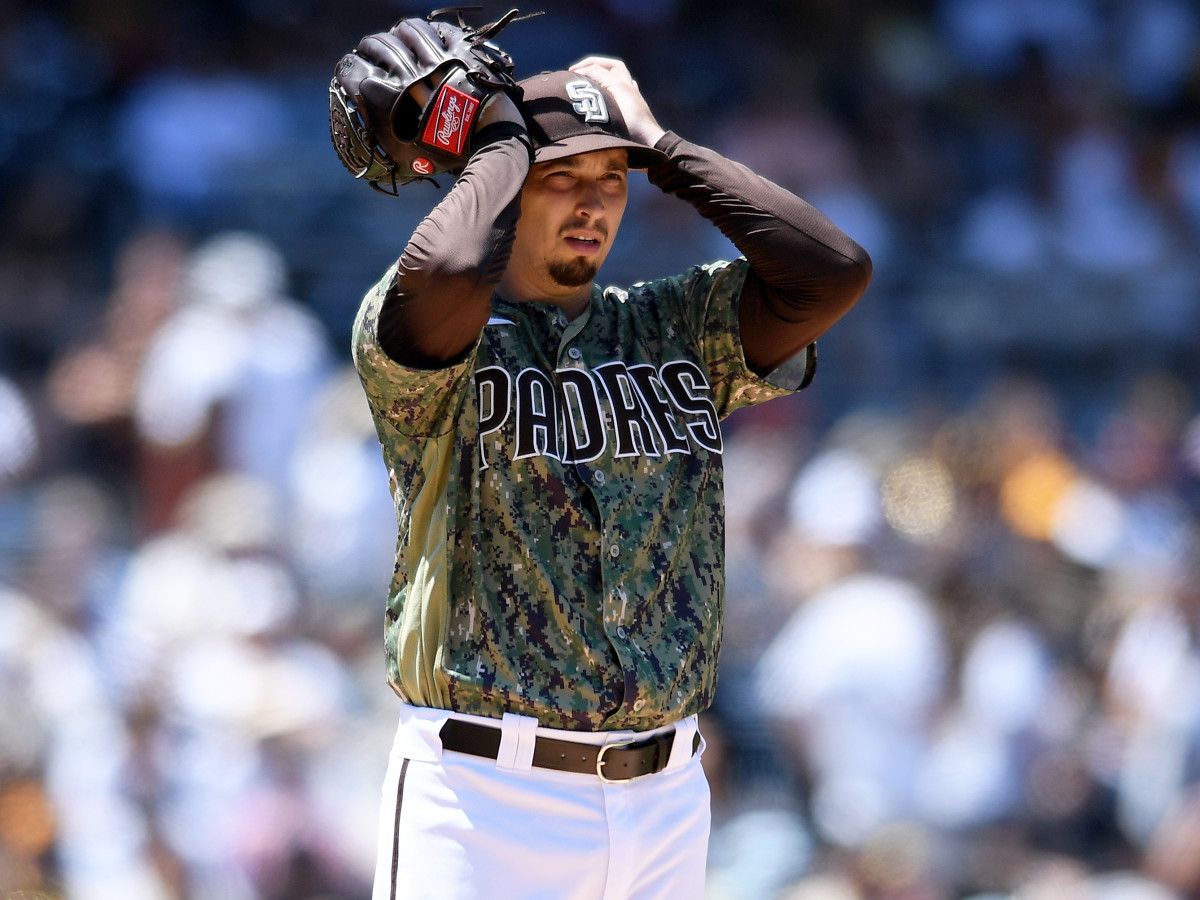Can the Padres Hold Their Playoff Spot?
Welcome to The Opener, where every weekday morning you’ll get a fresh, topical column to start your day from one of SI.com’s MLB writers.
To sign the current version of Jake Arrieta is to be motivated by either crazed optimism or profound desperation. The Padres may or may not have the former. But they seem to be seriously afflicted with the latter.
Over the last three weeks, San Diego has seen its playoff chances go from all but guaranteed (92% on July 27) to worse than a coin flip (47% on August 18). Some of that has been out of the team's control—its recent slide wouldn’t have looked anywhere near so bad, or affected the postseason odds nearly so much, had it not coincided with a hot streak from Cincinnati. But much of the blame for the Padres' recent woes is their own. Their losses have been not just unfortunate, or poorly timed, but all-out demoralizing: They dropped three games over the weekend to the hapless Diamondbacks and now stand to lose another should-have-been-easy series to the Rockies. After missing an opportunity to bolster their rotation at the trade deadline, they've watched as several key starters were sidelined by injuries, with few solid replacements available in-house. That’s how Arrieta—shed by the Cubs last week with a 6.88 ERA—ended up scheduled to start for San Diego on Wednesday. And all of the above points to a question that would have seemed unthinkable just a few weeks ago: Can the Padres hold onto their playoff spot?

Much of the answer hinges on San Diego's starting pitching. Its situation right now is almost untenable: Since the All-Star break, Padres starters have a 5.73 ERA, second-worst in the NL. That’s been heavily influenced by the fact that both Yu Darvish (back tightness) and Chris Paddack (oblique strain) landed on the IL in August, joining fellow starter Dinelson Lamet, who has been out with a forearm strain since June. That’s bad all around: There’s never a good time for a team to lose three starters. But it’s hard to imagine worse circumstances than these.
San Diego’s other core rotation members have been underperforming; Blake Snell has looked off all year, walking more batters than any other pitcher in baseball, while rookie swingman Ryan Weathers has struggled to get his feet under him. Sound like a chance to try someone, anyone, else? The Padres simply don’t have enough depth to make that workable. There are precious few options here, which has left them tinkering with experimental moves like using an opener, rather than just calling on the next man up. And the timing of all this has been maddening. This wave of injuries occurred directly after a trade deadline when the team declined to add another starter—turning a mild need into a pressing one only after the front office had lost its chance to address it. (If there was ever a moment for a club to beg for the return of the waiver trade deadline, this is it.)
Of course, San Diego was able to build a comfortable lead over the spring and summer, and there should have been plenty of space to breathe in that second wild-card spot. There were no teams within six games of the Padres as recently as a week before the trade deadline. But the field has gotten crowded in a hurry. Their biggest threat, Cincinnati, now sits just a game and a half back; St. Louis is four games behind while Philadelphia is four and a half. And the remaining schedule doesn’t bode well for them. The Padres have a difficult road ahead—the toughest schedule left in baseball—with 10 games against the Giants and nine games against the Dodgers. (They have more games left against either of those two heavyweights than they do against all losing teams combined.) The Reds, meanwhile, have one of baseball’s easiest schedules for the rest of the year, including three series against the Pirates in September and October, and the only team with a mathematically easier schedule than Cincinnati is ... the Phillies.
To sum all of that up: The Padres did not upgrade at the deadline as much as they could have, which left them ill-equipped to handle the injuries ahead, which sent them into a slide at just the moment when the teams behind them were picking up steam, which looks especially bad in light of the fact that the upcoming schedule is a disaster for San Diego while a relative breeze for Cincinnati and Philly.
Team | Record | Wild Card Games Back | Playoff Odds | Wild Card Odds |
|---|---|---|---|---|
Padres | 67-55 | - | 47% | 46.9% |
Reds | 65-56 | 1.5 | 41.2% | 38.6% |
Cardinals | 61-57 | 4.0 | 6.4% | 6.1% |
Phillies | 61-58 | 4.5 | 34.2% | 3.0% |
It’s bad! Yet it’s certainly not a lost cause. Even with their rotation troubles, the Padres remain better on paper than their competitors, with a lineup far better than those of the clubs chasing them. The odds are still in their favor. They could’ve been dealt a serious blow to their lineup with the loss of Fernando Tatis, Jr., and instead, they have him back, even if only in the outfield. A few similar lucky breaks for the rotation—with, say, Lamet and Darvish—would go a long way. The path to October is absolutely visible for the Padres. But at this point, it just might require something along the lines of crazed optimism or profound desperation. Or both.
More MLB Coverage:
• Return of Bruised Bombers Bolsters Red-Hot Yankees
• The Revival of Joey Votto
• Better Late: Old-School Brian Snitker Is Thriving in Today's MLB
• Crying Foul Over Ballpark Injuries
